L2 Pharmacology Orientated Human Anatomy Physiology
Anatomy is the study of the STRUCTURES of the body, and the relationship among structures.
- This is the WHAT and WHERE of the body.
- The word itself means “to cut up.”
Physiology is the study of how the body Functions.
- The “how” is often on a chemical level
Anatomy and Physiology are closely integrated, both theoretically and practically
- All specific functions are performed by specific structures.
- What a structure can do depends on its specific form
一、Levels of Structural Organization
Chemical – atoms combined to form molecules
Cellular – cells are made of molecules
Tissue – consists of similar types of cells
Organ – made up of different types of tissues
Organ system – consists of different organs that work closely together
Organism – made up of the organ systems
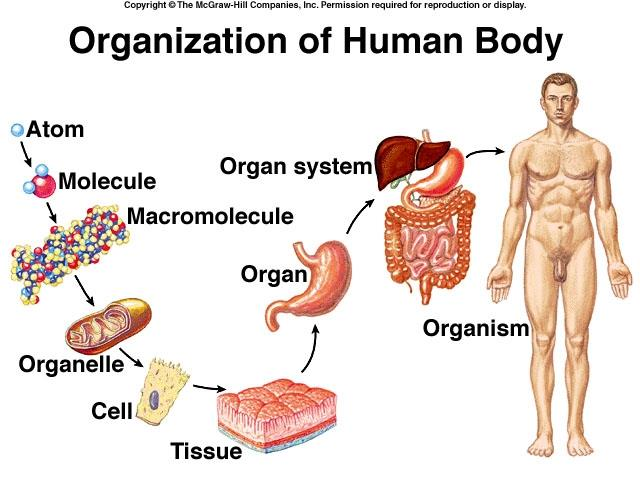
Levels of Organization in the Body
| Level | Examples |
|---|---|
| Cells | Erythrocytes, neurons, adipocytes |
| Tissues | Epithelial, connective, muscular, nervous |
| Organs | Examples include stomach, liver, heart |
| Organ Systems | Examples include digestive and circulatory systems |
1. Tissues in the Human Body
| Name | Function |
|---|---|
| Epithelial | Covering or lining tissue |
| Connective | Joins, stores and supports |
| Muscle | Internal and external movement |
| Nerve | Conducts electrical signals |
2. Human Organ Systems
- Skeletal
- Muscular
- Circulatory
- Immune
- Respiratory
- Digestive
- Excretory
- Reproductive
- Nervous
- Endocrine
- Integumentary 皮肤系统
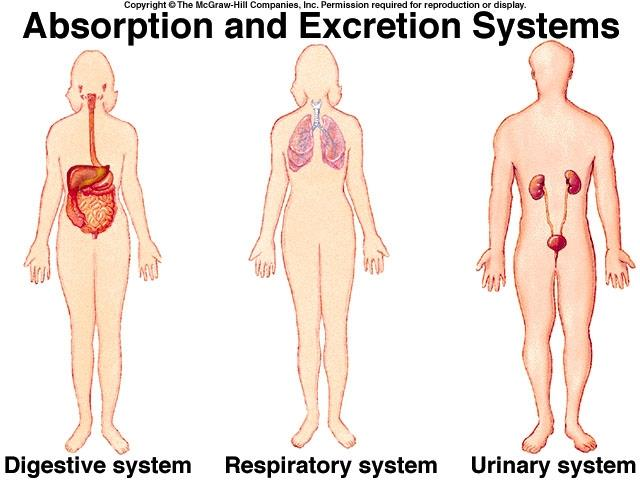
Human Respiratory System
Respiration is gas exchange between an organism and the environment
Respiratory structures include the nose, pharynx, larynx, trachea, bronchi, bronchioles and alveoli
- Mechanics of Breathing
- Exhalation
- Inhalation
- Respiratory Diseases (Diseases due to dysfunctional respiratory system)
- Respiratory failure
- Asthma
- Chronic obstructive pulmonary disease (COPD,慢性阻塞性肺疾病)
- Pneumonia(肺炎)
- Lung cancer
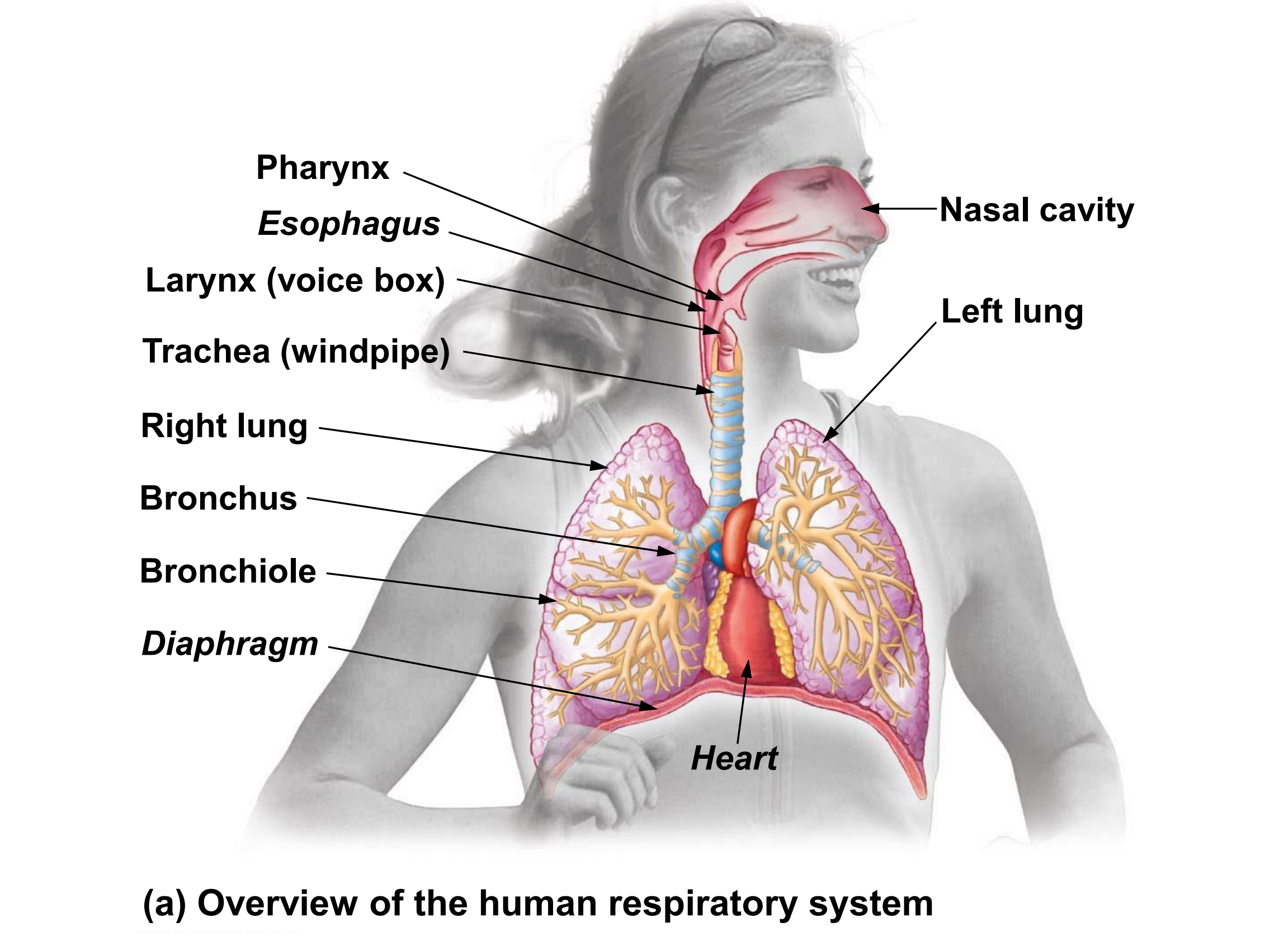
Parts of the Respiratory System:
| Part | Function |
|---|---|
| Trachea 气管 | Directs air into the lungs. |
| Bronchi 支气管 | Passages through which air enters the lungs |
| Lungs | Transfer oxygen into the blood and remove carbon dioxide from the lungs |
| Bronchial tubes | Tubes running from the trachea to the lungs |
| Alveoli | Tiny air sacs in the lungs |
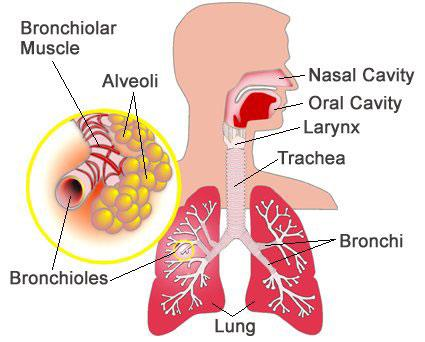

Excretory System
Functions of the Digestive and Excretory System:
- Digestion
- Waste Removal (solid)
- Conversion of food energy to energy usable by the body
- Absorption of nutrients
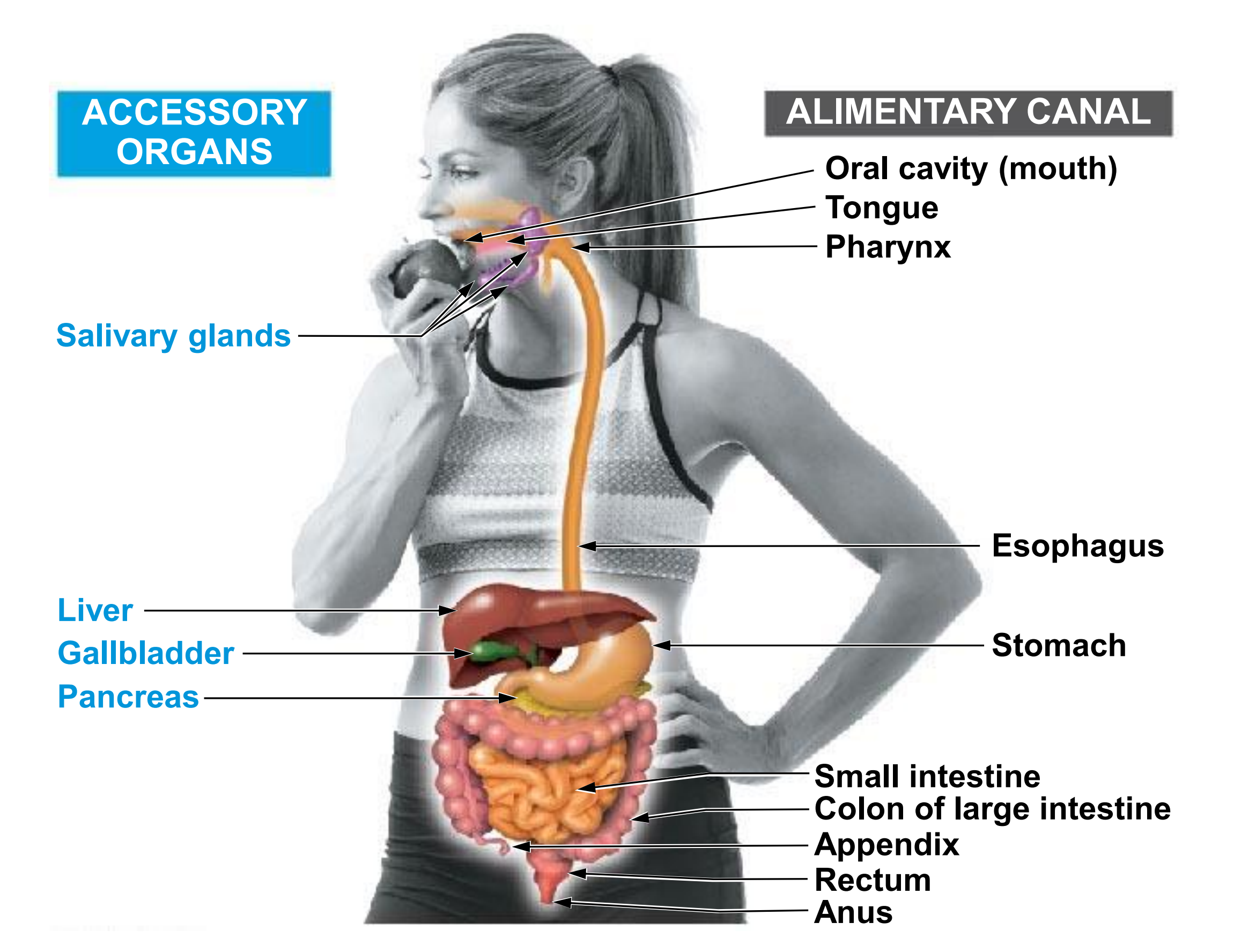
Mouth: food is chewed and swallowed, Enzymes are added to food in this process.
Peristasis: Process where food is moved through the digestive system by waves of rhythmic muscular contractions
The functions of different parts of the digestive system:
| Part | Substance Absorped |
|---|---|
| Small Intestine | finish breaking down the proteins, carbohydrates, and fats (Most of the absorption of nutrients takes place in the small intestine) |
| Large intestine | Vitamins, Minerals, and Water are absorbed |
| Liver | Secretes chemicals that help digest fats in the small intestine. Stores glucose |
| Pancreas | Secretes enzymes that break down carbohydrates and proteins in the small intestine |
Human Excretory System
Excretion is the removal of metabolic wastes from the body, including toxic chemicals, excess water, carbon dioxide and salts
Maintains
- salt content
- water content
- blood pressure
- acid-base balance
Excretory Organs
- Skin: sweat
- Lungs : carbon dioxide and water vapor
- Kidneys: urine
Diseases due to dysfunctional Digestive and Excretory system
- Diarrhea(腹泻)
- Diabetes
- Other metabolic diseases
- Cancer
- Inflammatory Bowel Diseases 肠道炎症
Transport Systems - Cardiovascular system
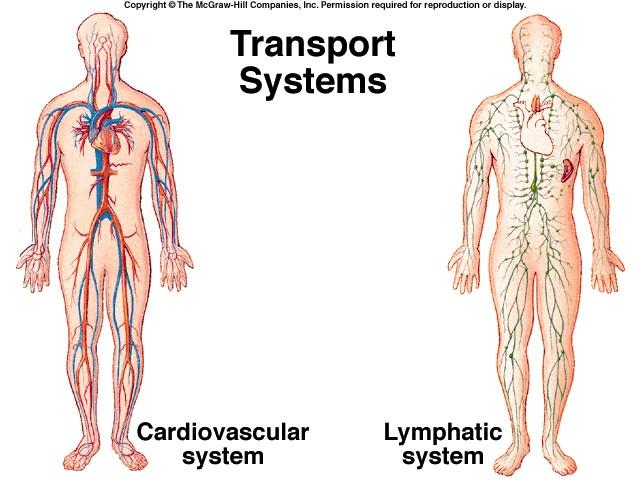
The cardiovascular system is transport system of body
It comprises blood, heart and blood vessels.
The system supplies nutrients to and remove waste products from various tissue of body
Components of cardiovascular system:
- blood
- heart
- blood vessels
(1) Blood
The Blood: Blood cells & Plasma
- Plasma is fluid portion
Blood cells
- Erythrocytes Red Blood Cells
- Leucocytes
- Thrombocytes 血小板
(2) Heart
Heart is a four chambered, hollow muscular organ approximately the size of your fist
Location:
- Superior surface of diaphragm 横膈膜上表面
- Left of the midline
- Anterior to the vertebral column(脊柱), posterior to the sternum(胸骨)
Functions of the heart
- Generating blood pressure
- Routing blood: Heart separates pulmonary and systemic circulations
- Ensuring one-way blood flow: Heart valves ensure one-way flow
- Regulating blood supply: Changes in contraction rate and force match blood delivery to changing metabolic needs
The structure of heart:
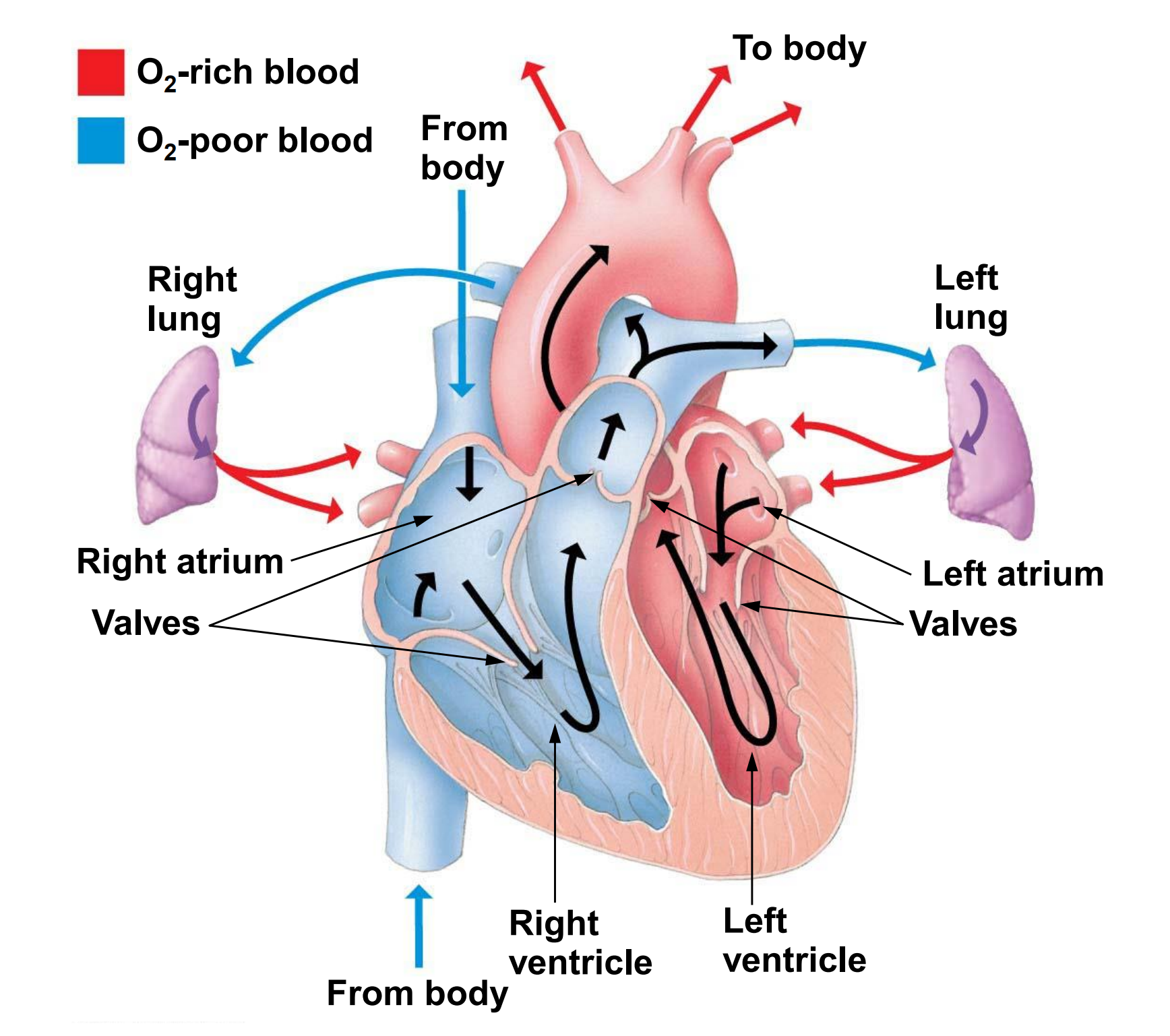
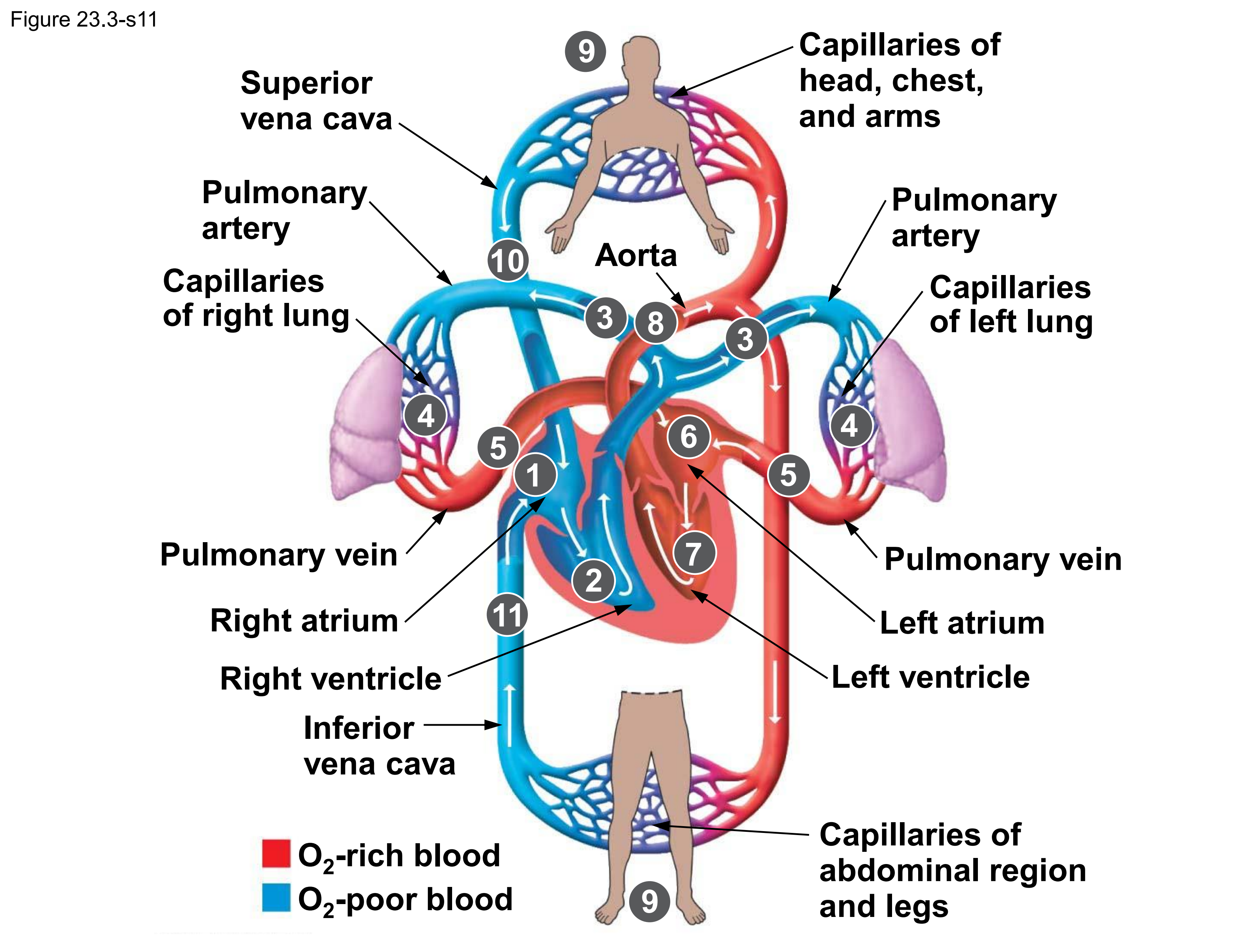
(3) Blood Vessels
Blood Vessels - A closed network of tubes
Arteries (Distributing channel)
- Thick walled tubes
- Elastic Fibers
- Circular Smooth Muscle
Capillaries (microscopic vessels)
- One cell thick
- Serves the Respiratory System
Veins (draining channel)
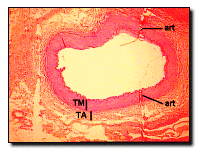
The Organization of Blood vessels
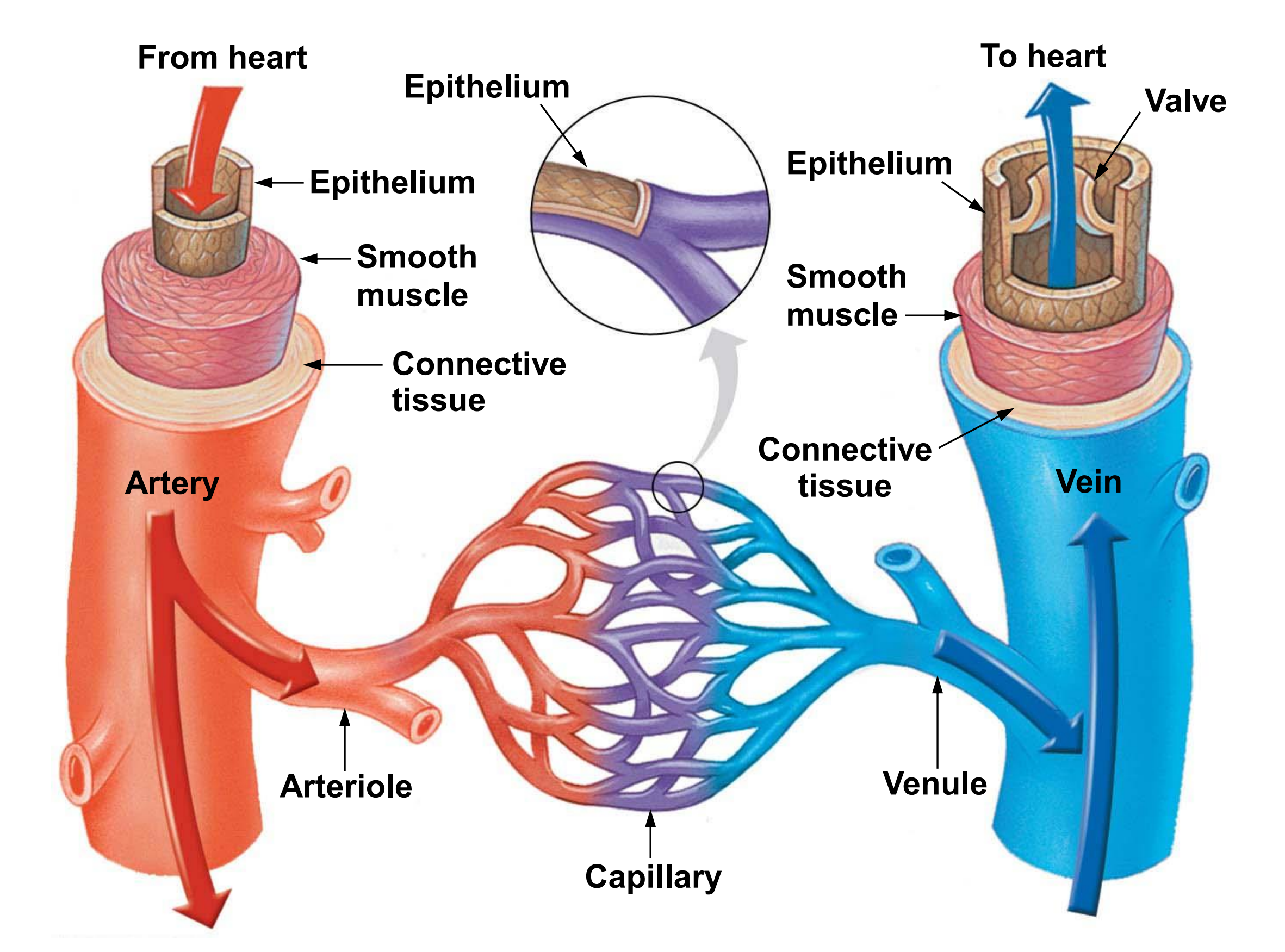
Human lymphatic System
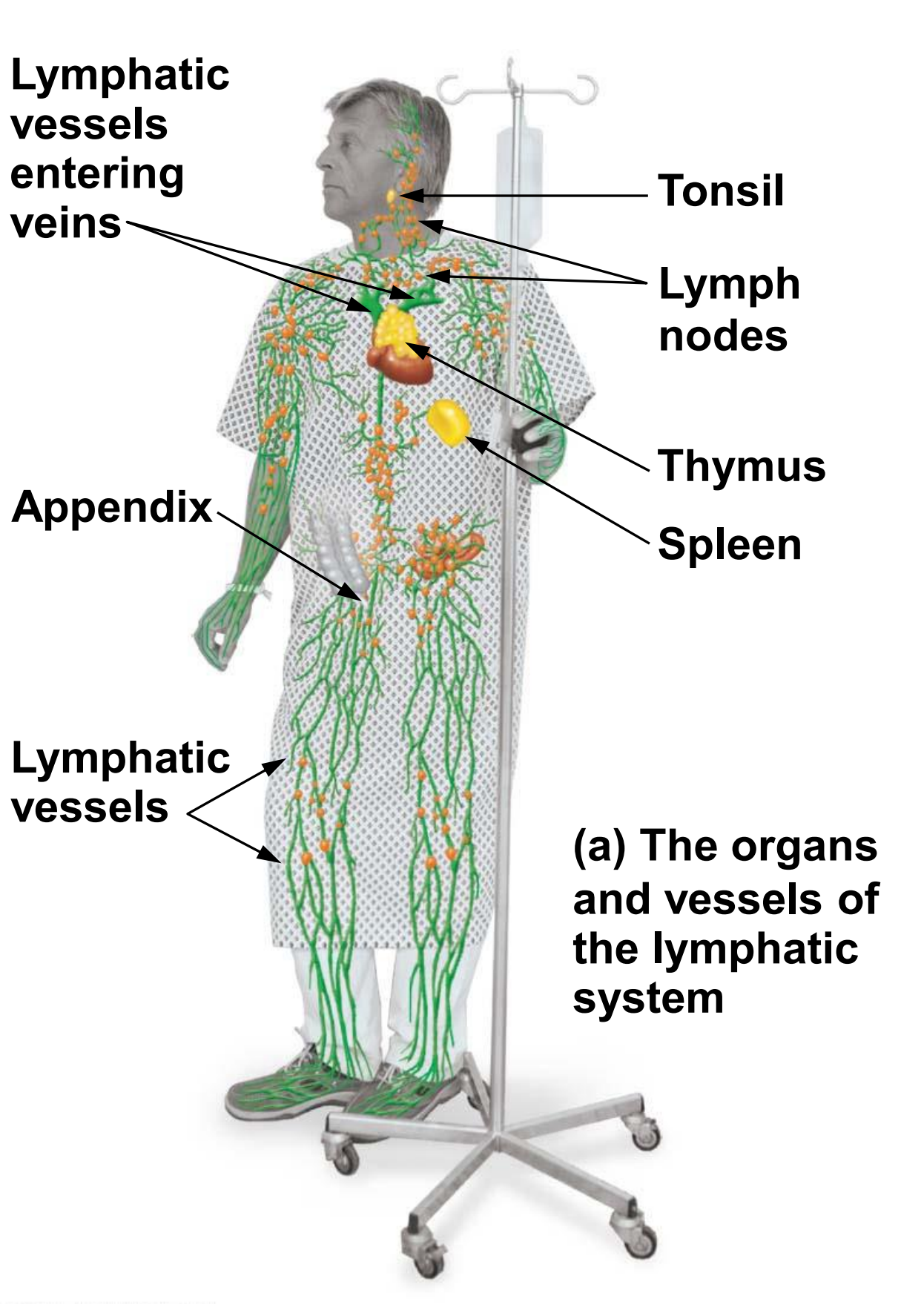
Nonspecific defense responses
- Skin and mucous membranes
- Inflammatory response
- Temperature
- Proteins
- White blood cells
Specific immune responses
- Humoral immunity
- Cell-mediated immunity
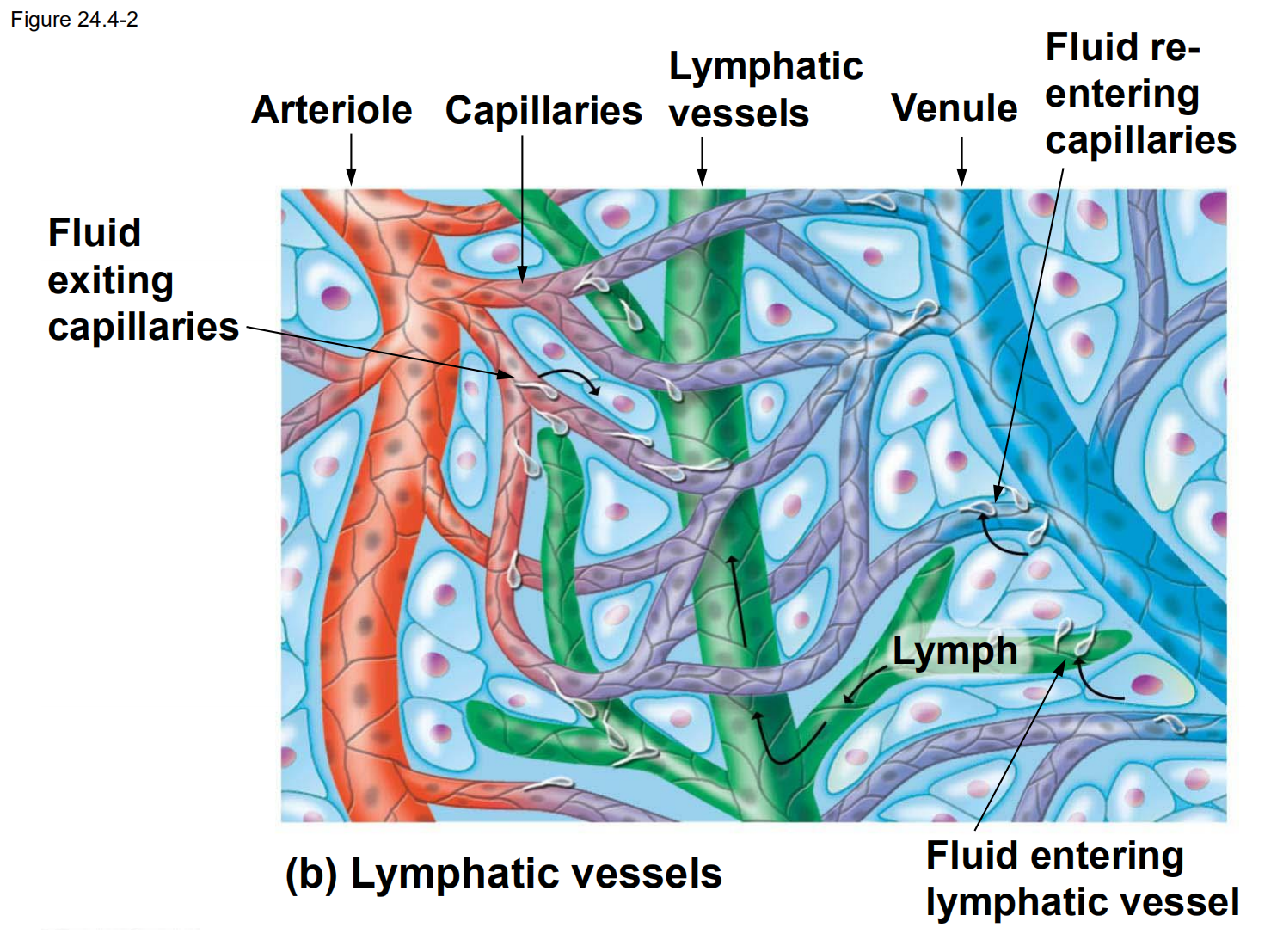
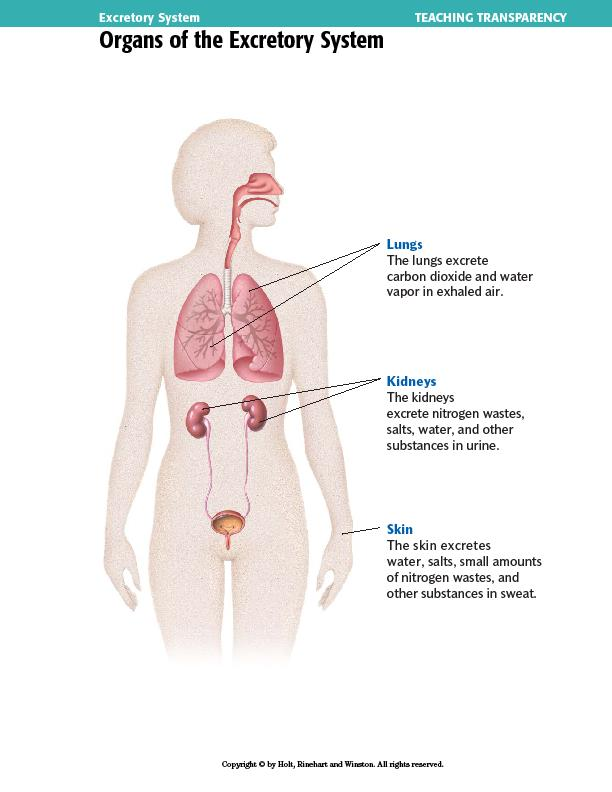
Diseases due to dysfunctional Circulatory system
- Heart Failure/Arrythmia
- Hypertension
- Atherosclerosis
- Other metabolic diseases
- Infectious Vs. Autoimmune diseases
Urine System
Human Urinary System Diagram:
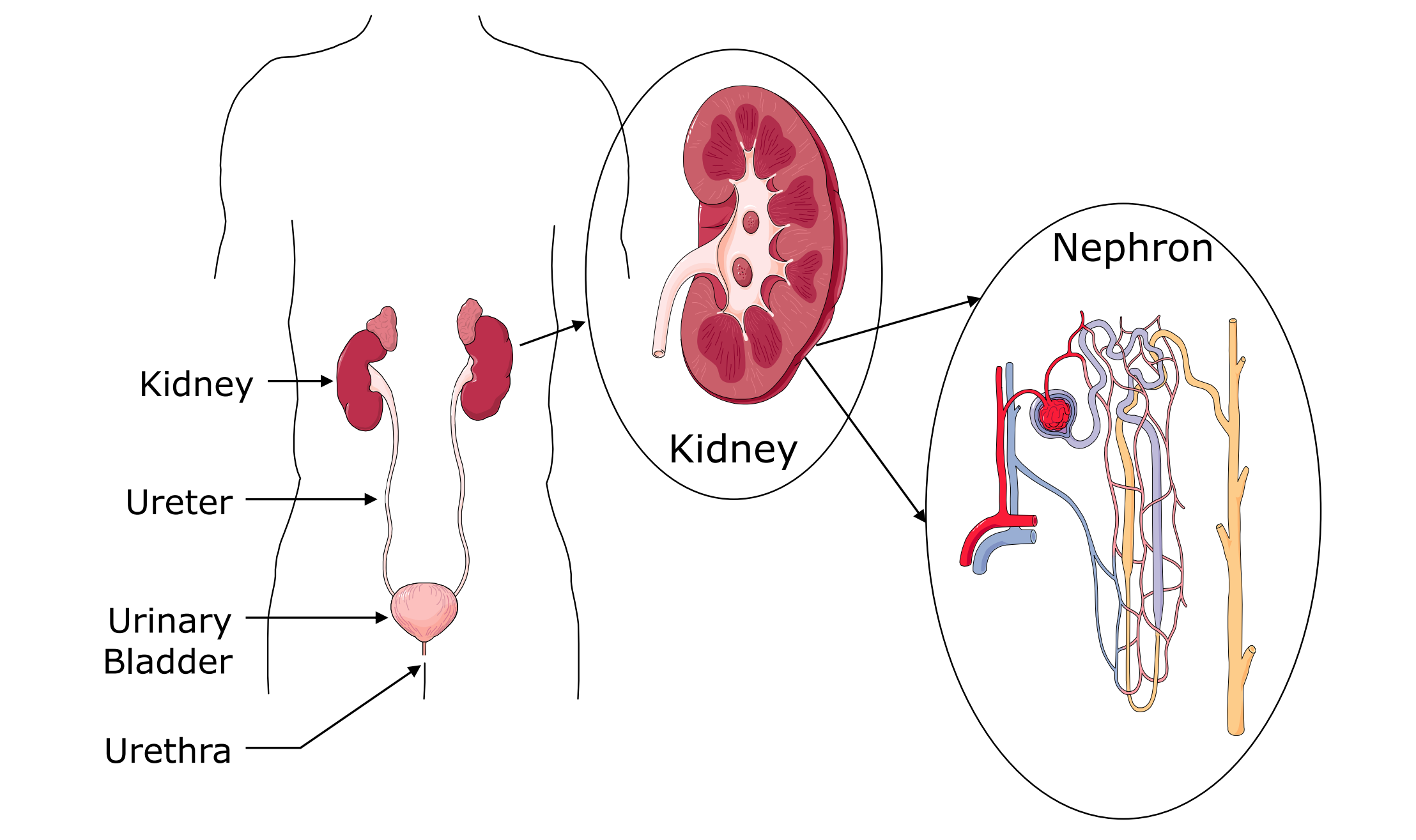
Kidneys
- Filter blood about 10 times a day. (about 1 liter per hour)
Nephrons
- Blood filtering units in the kidney
- Each kidney has millions of them
- They remove salts, water, and cell waste from the blood
- 99% of the water removed by the nephrons is reclaimed by the capillaries.
- Liquid waste is called urine
Diseases due to dysfunctional Urinary system
- Diabetes
- Kidney Failure
- Kidney Stones
- Hypertension
Endocrine System
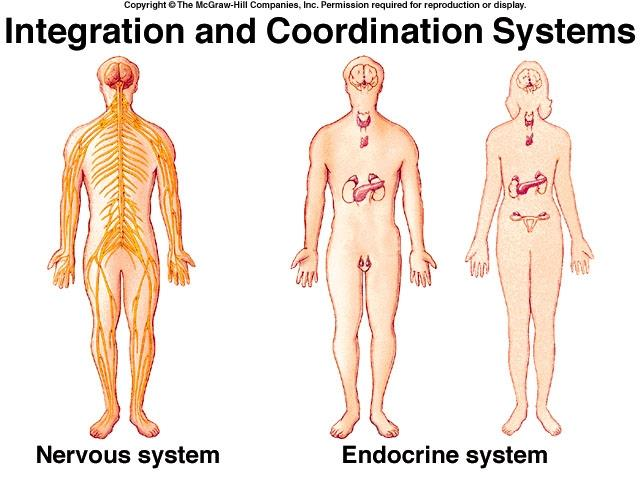
The endocrine system consists of ductless glands that produce hormones
- Hypothalamus, pituitary(垂体), pineal(松果体), thyroid(甲状腺), parathyroid, thymus, adrenal, pancreas, ovary, testes
Hormones are chemical messengers that travel through the blood stream and affect activities throughout the body
- Steroid hormones
- Non-steroid hormones
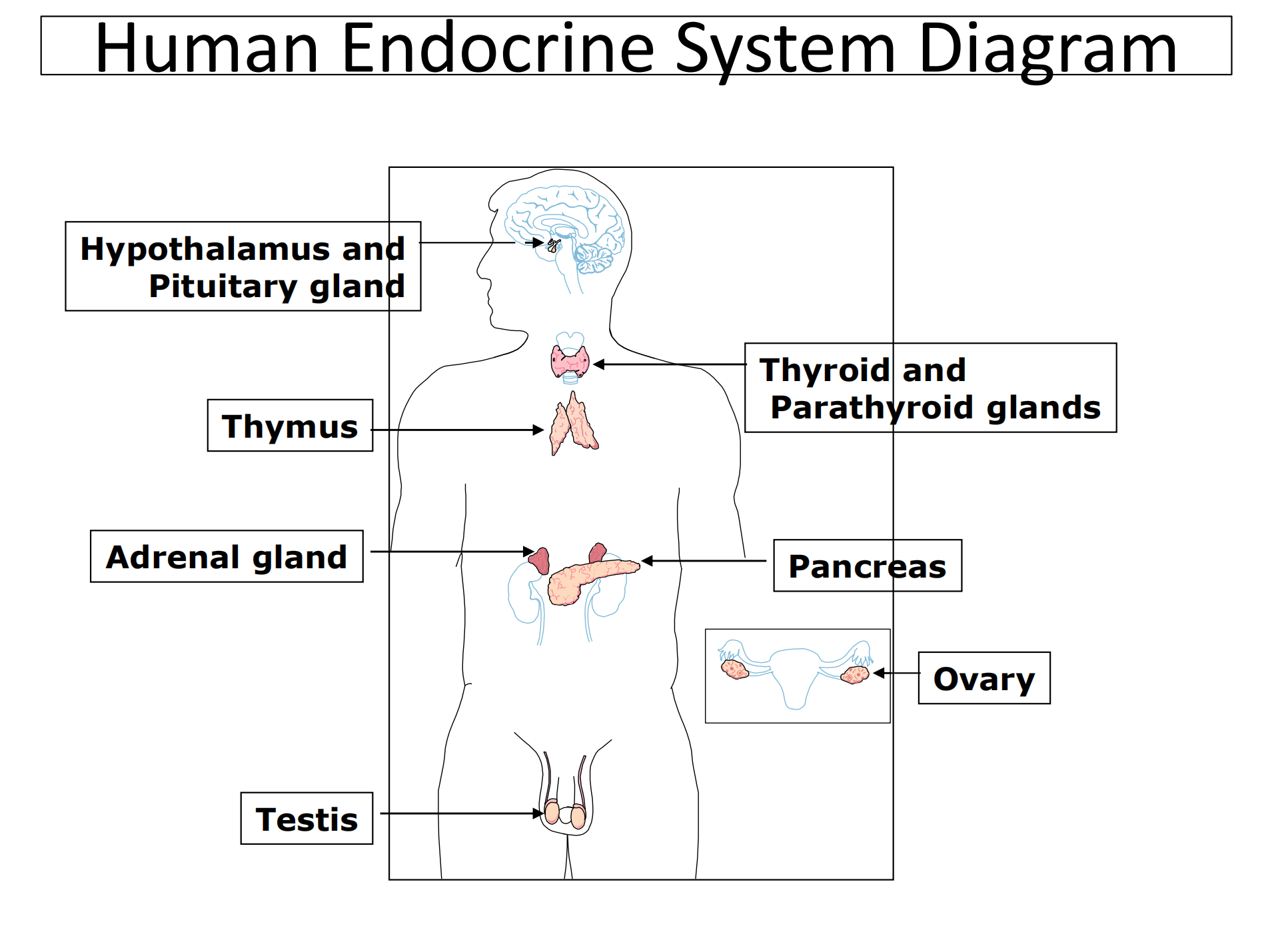
Pituitary Gland:
- Function: It secretes nine hormones that directly regulate many body functions and controls functions of other glands.
- Disorders: To much growth hormones (GH) in early childhood can result in a condition called gigantism. To little GH can result in Pituitary Dwarfism(垂体性侏儒症).

Thyroid Gland
- Function: plays a major role in regulation the body’s metabolism
- Disorders: If the Thyroid Gland produces to much Thyroxin(甲状腺激素), it can cause a condition known as Hyperthyroidism(甲状腺功能亢进). If to little thyroxin produces it is called Hypothyroidism(甲状腺机能减退症)

Pancreas
- Function: The Insulin and Glucagon in the Pancreas help to keep the level of glucose in the blood stable
- Disorders: When the Pancreas fails to produce or properly use Insulin, it can cause a condition known as Diabetes Mellitus.
Adrenal Gland
- Functions: The adrenal glands release Adrenaline in the body that helps prepare for and deal with stress.
- Also regulates kidney function

Ovaries
- Functions:
- Pair of reproductive organs found in women that produce eggs.
- Also secrete estrogen and progesterone, which control ovulation and menstruation.

Testes
- Functions:
- Pair of reproductive glands that produces sperm.
- Also secrete Testosterone to give the body its masculine characteristics.

Interaction of Glands
- The hypothalamus is located in the brain and controls the release of hormones from the pituitary gland. It is an important link between the endocrine and nervous systems.
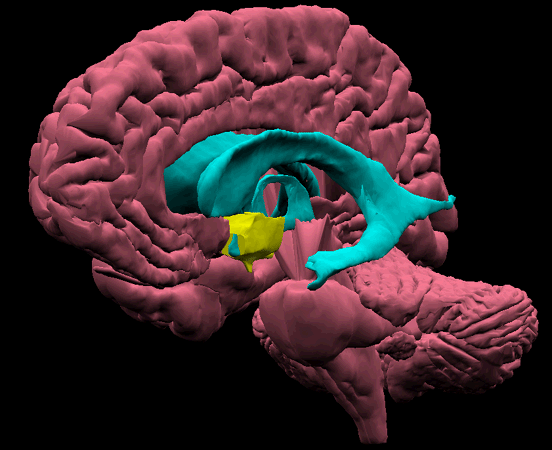
Diseases due to dysfunctional Hormonal system
- Diabetes
- Other Metabolic Diseases
- Stress/Depression, etc